From post to prison to protest site to park, the island of Alcatraz has worn many hats.
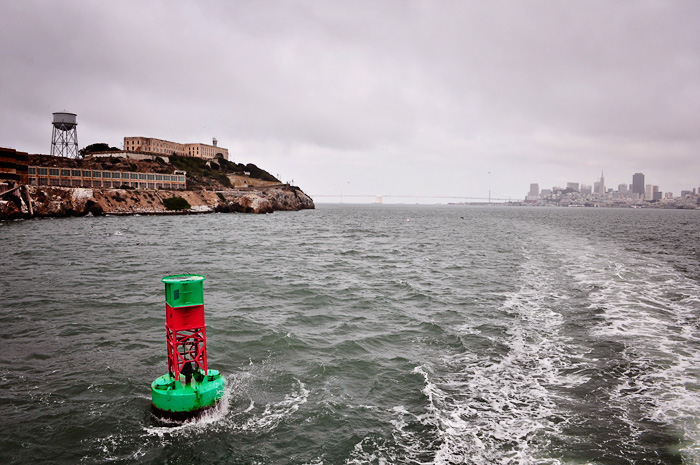
The thing of it is, how can a rocky piece of foggy, cold outcrop amidst the freezing waters San Francisco Bay not be enticing?
Like a child who wants only what he's told he can't have, this inhospitable dribble of land has inspired a number of creative uses over the last couple of centuries. It became a fortified army post during the mid-1800s, as well as hosting a lighthouse for the ever-increasing ship traffic entering the bay. The army kept prisoners there as early as 1859, and it remained in use even after the fort was decommissioned. It didn't reopen as a federal penitentiary until 1934, the use for which it's best known, hosting a few notorious criminals like Al "Scarface" Capone, George "Machine Gun" Kelly, and Robert Stroud, the "Birdman of Alcatraz" during its 29 years of operation. Native Americans used the island as a staging point for protest against federal oppression in 1969 and occupied the land for 19 months before the hype died down.

Of course its use as a federal penitentiary, with its craggy wave-eroded shores, foreboding barbed-wire fences, and wind-beaten cell house at its peak, inspires the most rumors. And though it's easy to invent disturbing stories and creepy scenarios about the people forced to live in such isolation, (heck, one of the more notorious of the inmates during its stint as a correctional facility was Alvin "Creepy" Karpis, whose name speaks for itself), the truth is that it was the isolation itself -- the unforgiving soil, the rocky terrain, the inclement bay weather, and the limited accessibility -- that became the island's downfall with each hat it wore.
The defenses of fortified Alcatraz became obsolete by the late 1800s and were too much of a hassle to replace, and the penitentiary proved too expensive to maintain by 1963. Even the Native Americans, who cleverly cashed in on the irony of occupying a nearly inhospitable and isolated bit of land to represent the gift of the American government, eventually succumbed to the difficulties of getting food, fresh water and basic necessities shipped to the island.
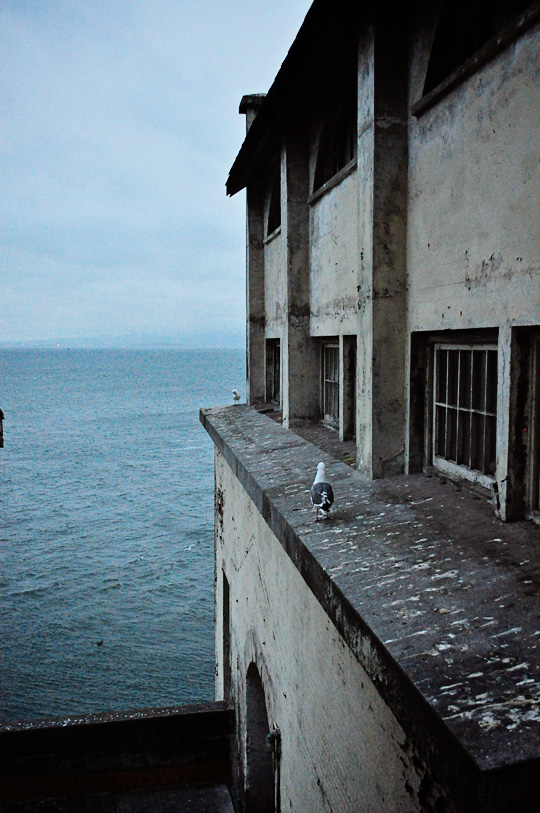
In 1972, the government finally smartened up.
Well. Let's not get crazy -- the government found a wise use for Alcatraz, and designated it as part of the Golden Gate National Recreation Area, and now people get to make money there -- not lose it.
Did you know you can visit Alcatraz? I toured the island back in 2003, and was excited to share the experience with friends during my recent trip to San Francisco. They've since started offering night tours, which -- of course -- we were totally going to do. We booked our tickets through the official Alcatraz Island ticketing website, AlcatrazCruises.com. You have to book at least a couple of months in advance during the summer, and certain parts of the tour itself were annoyingly crowded.
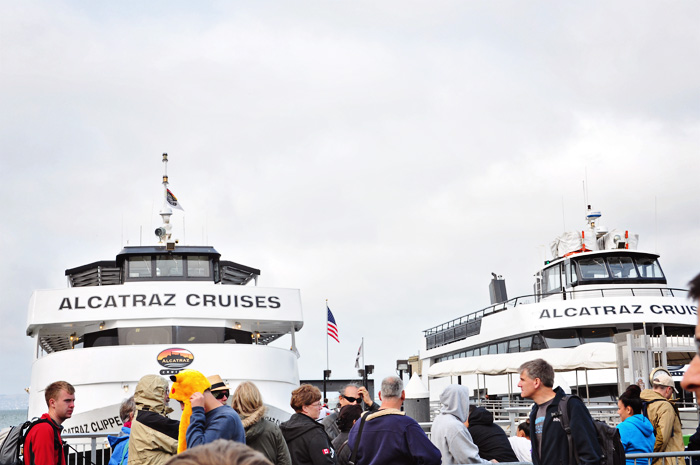
But the details, like the potted plants in the line corral, were a nice touch.
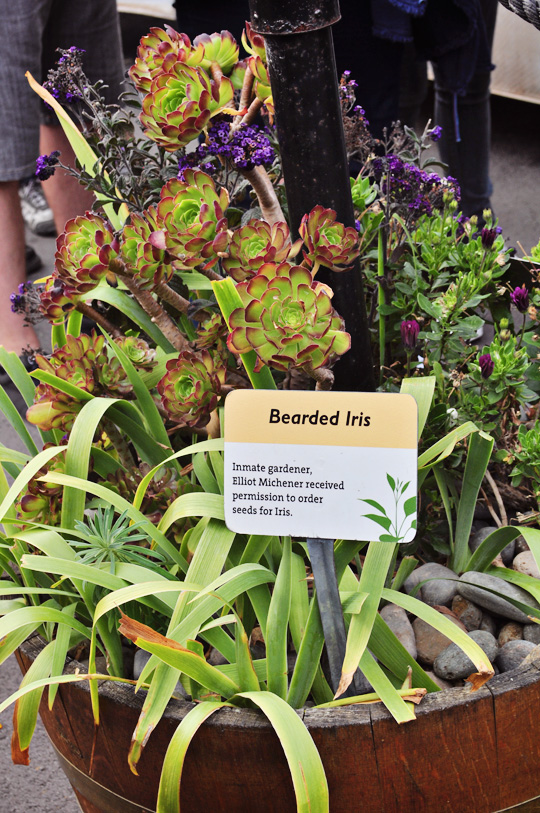
We found ourselves propelled to the top by the crowds, where the foggy views across the bay were spectacular.
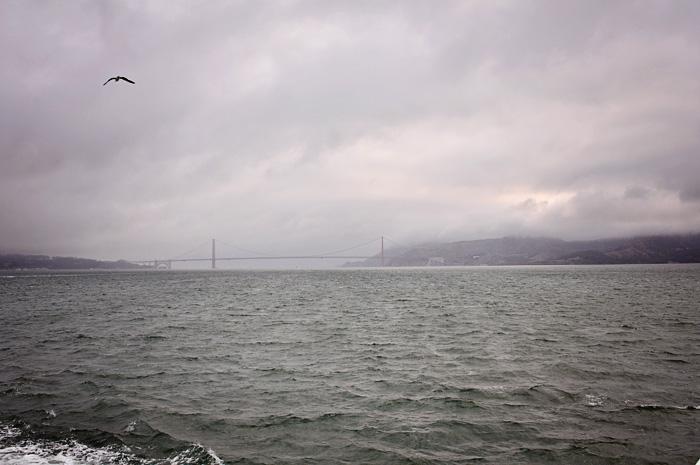

Dense fog assisted with the appropriate eerie effect as we approached The Rock, and decades of salt spray and eroding winds were evident along its craggy shores.
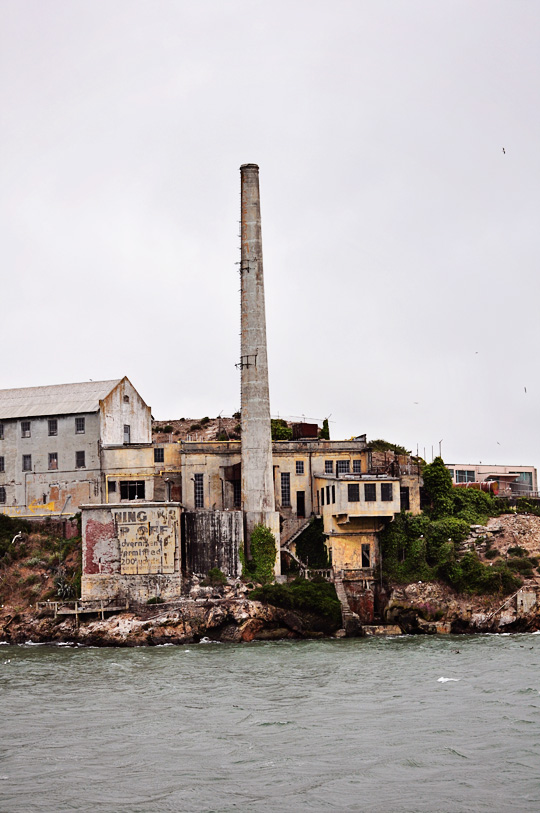
Our landing was precarious, and exiting the ferry was a challenge due to the unusually choppy waters. I imagined, of course, what prisoners must have been thinking while stepping off of the boat and onto this questionable conglomeration of foreboding cement, brick, and stone.
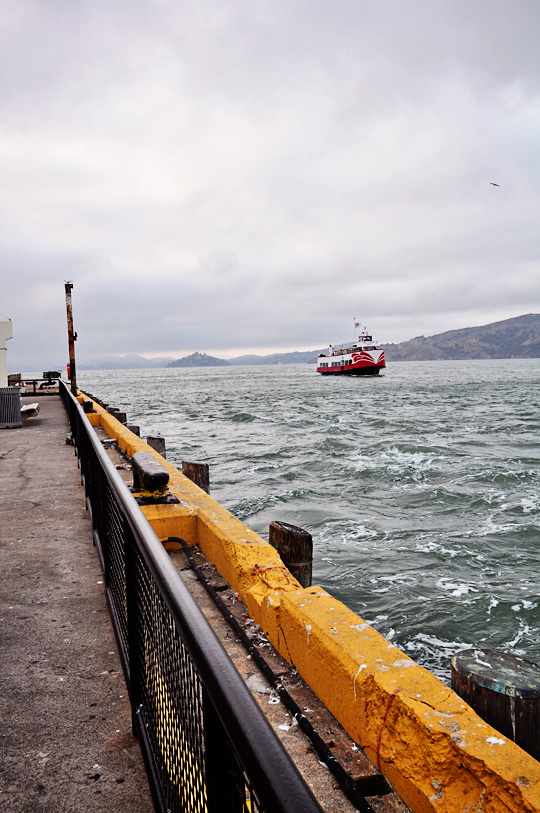
Park guides did their best to corral groups of people for a guided tour up the steep slope to the cell house, which sits at the very top of the island. We were free to walk up on our own to get ahead of the large groups for the self-guided audio tour, but we opted to stick around and hear the amusing story of an escape attempt -- a nice little touch to what otherwise would've been just a climb.
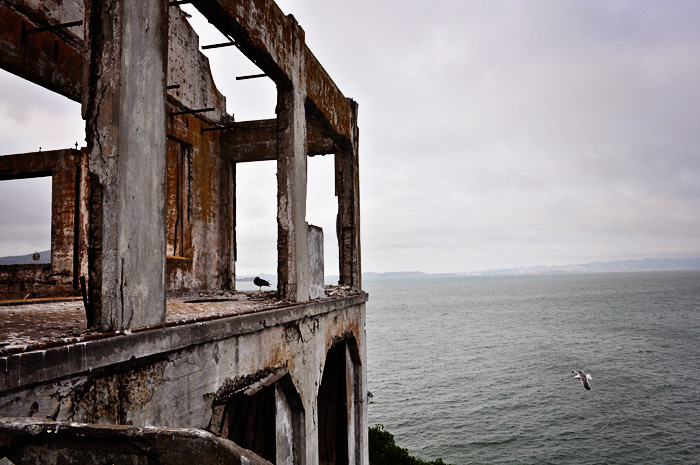
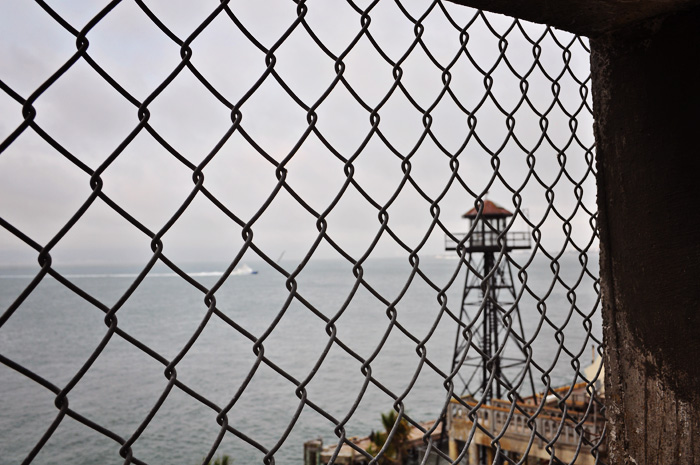
Foreboding prison walls encroached as we were handed our audio sets for the self-guided tour. With an accompanying soundtrack of interviews from former inmates, slamming cell doors, and other prison sounds, the narrator told stories of some of the more notorious criminals and escape attempts.
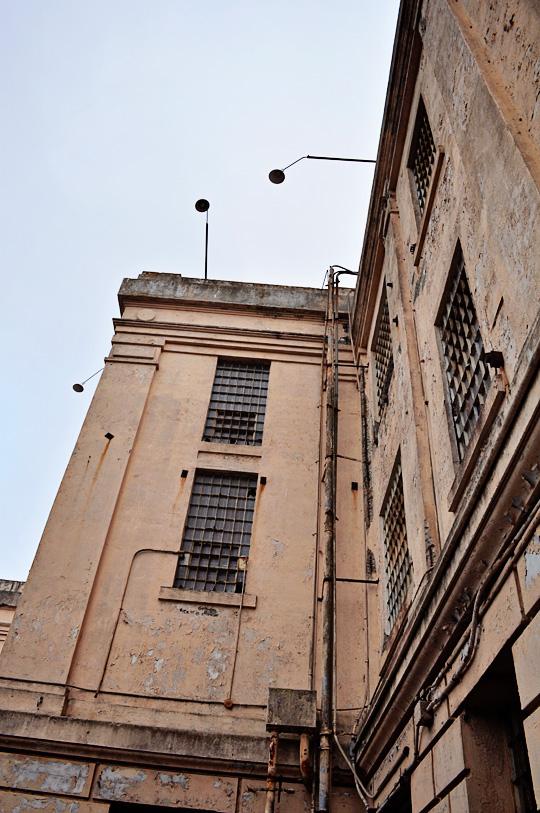
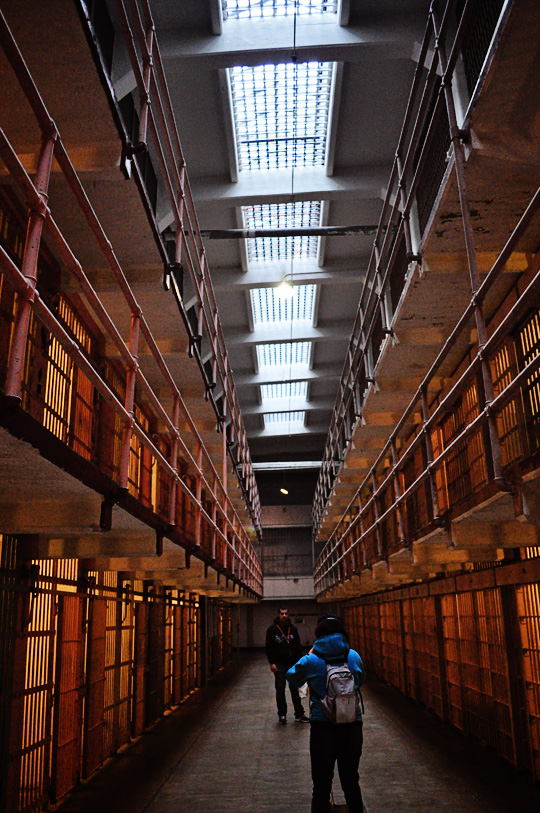
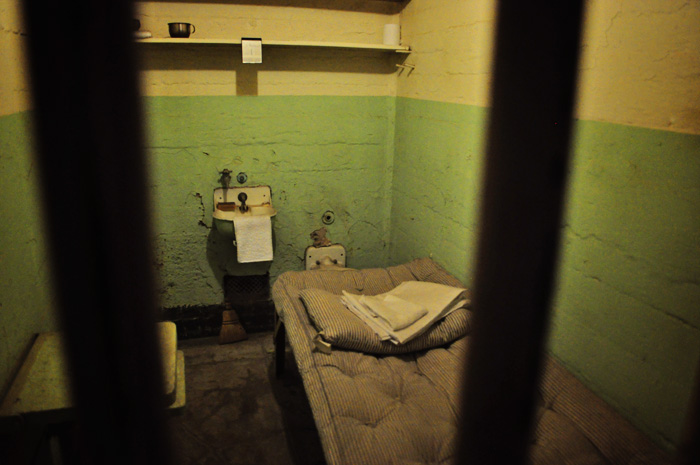
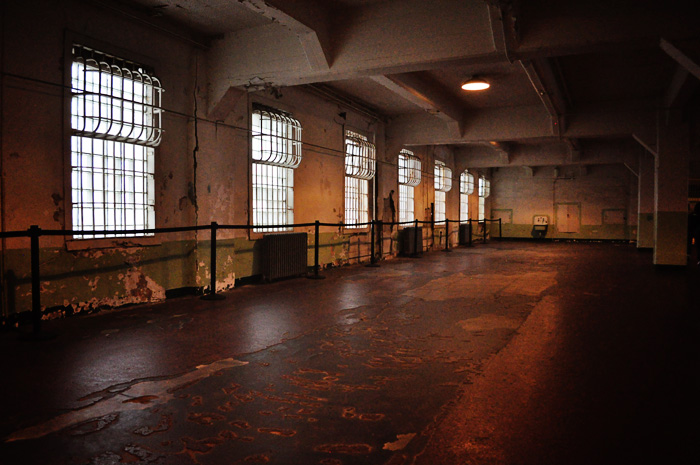
Because we sprang for the night tour, we were lucky enough to see some parts of the prison that aren't typically open during the day, like the hospital, the kitchen, and the chapel.

While most of the rumors about the prison in the bay are exaggerated -- the food was clean and the facility was well-kept -- it still, undoubtedly, must have been one of the worst places to pass a sentence. Mock isolation within range of the sights and sounds of the bustling life in San Francisco. Taunting boats skipping across waves, or haunting echoes of laughter bouncing across the bay.
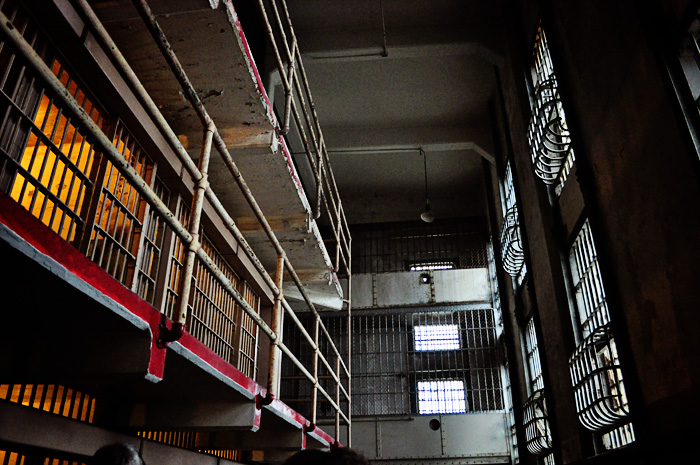
So close to soft beds and ritzy restaurants.
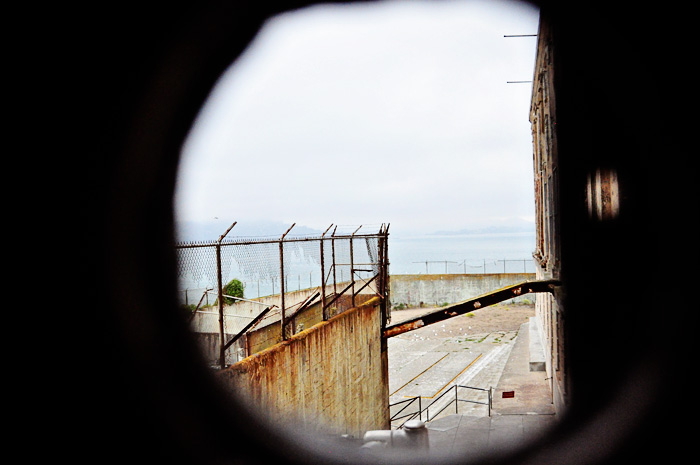
So close to freedom.
The original version of this post was published on Domestiphobia.net.